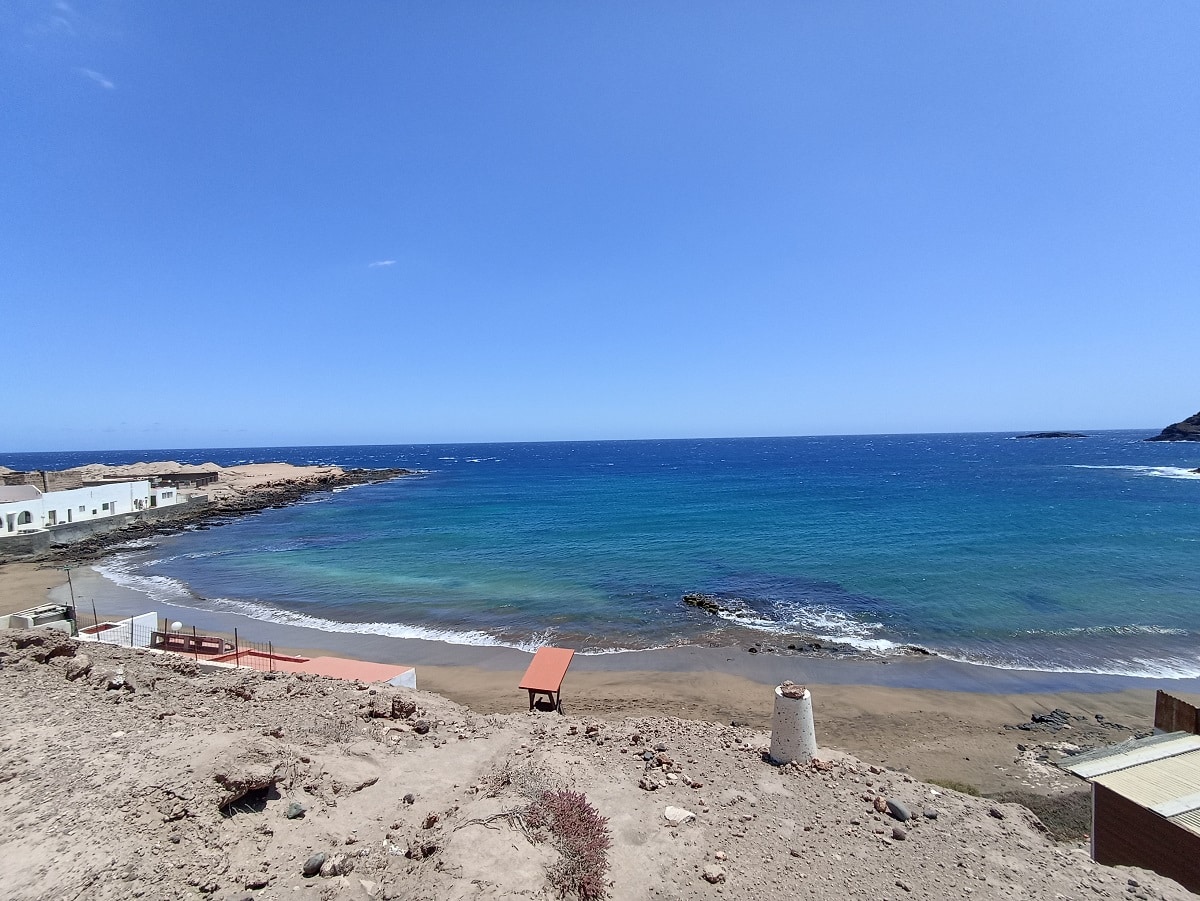If you’re visiting amazing Gran Canaria, I hope you brought a snorkel and goggles! The Atlantic Ocean around the Canary Islands is full of life, so don’t leave without checking out the underwater part of the island. There are tons of perfect snorkel locations, including tranquil and shallow natural swimming pools for the beginners among us.
To make things a little easier, I’ve gathered 8 of the best beaches I found during my own visits. This way, you can snorkel Gran Canaria without having to waste time looking for the good spots. Let’s dive in!
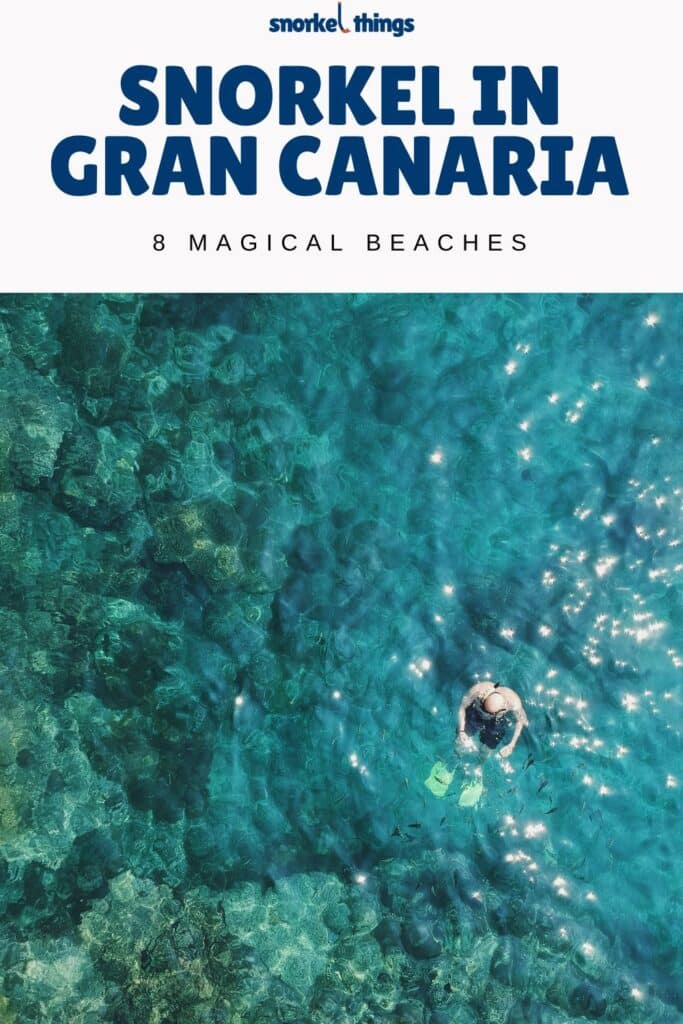
Before we start, please keep in mind that the Atlantic Ocean around Gran Canaria can be very rough. If the waves or current are too strong at your chosen destination, or there’s a red flag flying, please don’t get in. You can head to one of Gran Canaria’s natural swimming pools, which are always calm, instead. I discuss one of them on this list for those days where the surf is just too harsh.
Best overall: Playa del Cabrón, Arinaga
Playa del Cabrón, which is located on the eastern side of the island just outside of the town of Arinaga, comes as the most highly recommended spot for both diving and snorkeling in Gran Canaria. There are several reasons for this.
First off, the biodiversity here is considered among the biggest in the Canaries. The location boasts an incredible array of different species (I spotted octopi and cuttlefish in particular, but there are also angel sharks, rays, moray eels and other cool wildlife). In fact, the beach forms part of the Arinaga Marine Reserve, one of the few protected areas of its kind in the entire archipelago!
Secondly, the beach itself is beautiful and comfortable. Unlike many other snorkel beaches, it’s sandy, so you don’t have to sit on uncomfortable rocks in between swimming sessions. The surf here is often much calmer than in the surrounding areas because the sandy area is tucked into a rocky cove. It’s also easy enough to reach (though disabled access is less than stellar) and surprisingly enough, doesn’t tend to be overly crowded.
All in all, Playa del Cabrón is a must-visit, regardless of whether you’re looking to snorkel Gran Canaria or just spend a day tanning on the beach.
| Amenities? | No |
| Busy? | Medium |
| Easy to reach? | Yes |
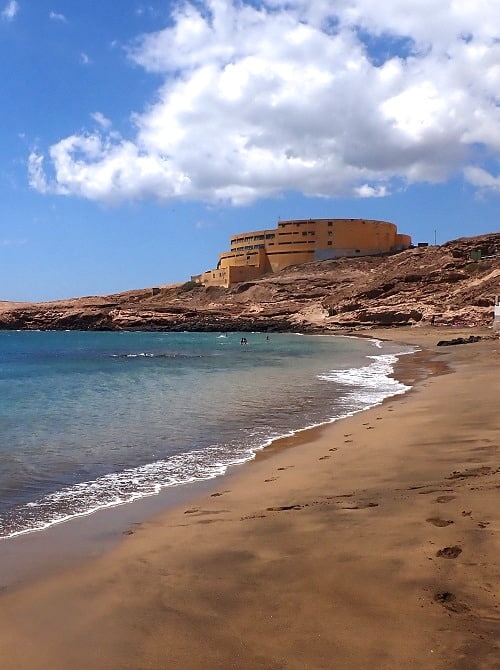
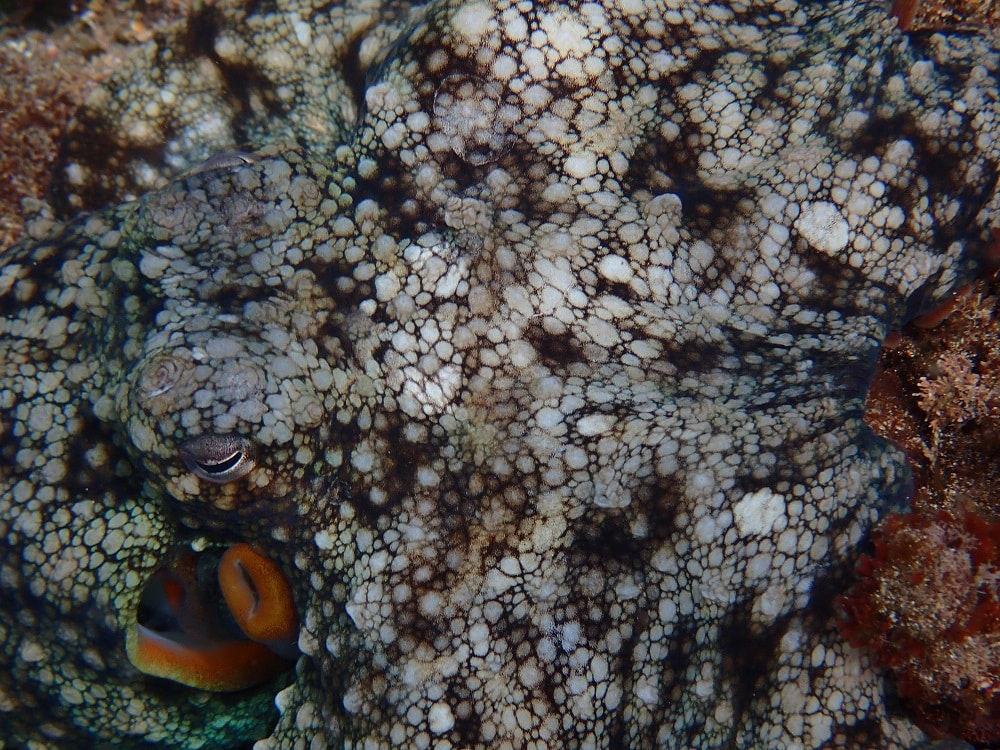
Best when the sea is rough: Punta de Gáldar
My second favorite spot to snorkel Gran Canaria are the natural swimming pools at Punta de Gáldar, located in the north.
The coast here tends to be too rough to snorkel safely, which is why these enclosed, waveless pools come in pretty handy! They’re constantly fed and refreshed by the sea, so they’re full of life, but there’s no risk of being swept away by a current or bumped into rocks by big waves.
If you’re a nervous swimmer or just trying out snorkeling for the first time, this is the place to be. The most dangerous thing that could happen here is falling on the stairs that lead into the water, as those can admittedly get a bit slippery.
Punta de Gáldar is easy enough to reach. Just park in the village above and then take a short, sloped path down to access the pools. Keep in mind that there aren’t really any comfortable spots to lie down – the entire zone is rocky – and there is no shade.
On the flip side, it’s also almost never crowded and the surrounding area is nothing short of stunning.
| Amenities? | No |
| Busy? | No |
| Easy to reach? | Yes |
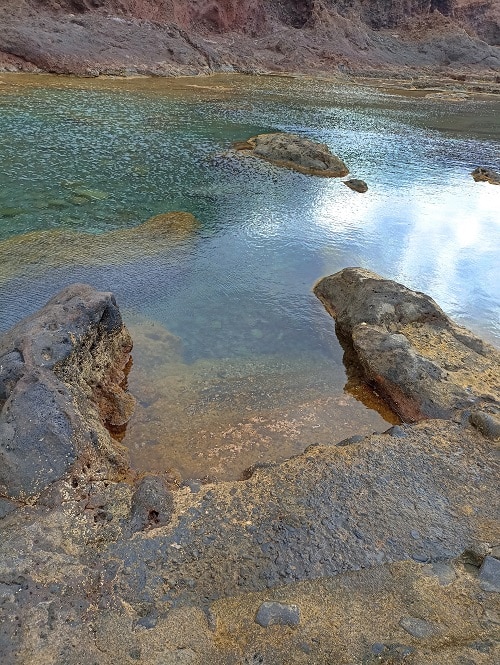
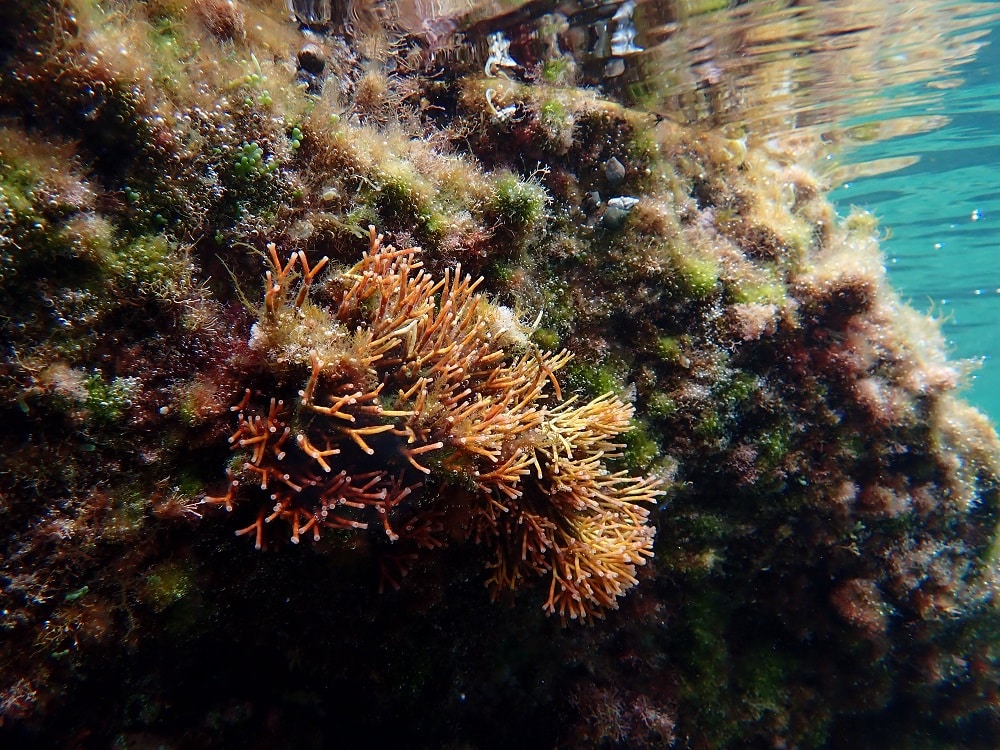
Best in the south: Puerto de Mogán
In the island’s south, not too far from ultra-crowded Maspalomas, you’ll find the charming village of Puerto de Mogán. This place is a must-visit if you’re in Gran Canaria due to its charming, flower-covered white houses, bridges and lovely small marina. To top it all off, it’s also one of the best spots for snorkel in the area.
Most folks who go to the beach in Puerto de Mogán end up in the man-made, sandy cove next to the town’s seaside promenade, which features lots of little shops, bars and restaurants. However, a quick look underwater will reveal that there’s not much to see here. The water is usually murky, and even if it’s not, all you’ll see are sandy shallows with a few common fish species.
The real fun is to be had just past the sandy beach area, where you’ll find a pebbly zone that has much more potential for a nice snorkel session. Take the convenient stairs that lead straight into the crystal-clear water and you’ll find a host of different fish and invertebrates among the rocks.
This is a fantastic snorkel site, but with all the amenities of a “regular” beach! Just be careful if the surf is strong, keeping your distance from the shore so you don’t get knocked into the rocks.
| Amenities? | Yes |
| Busy? | Yes |
| Easy to reach? | Yes |
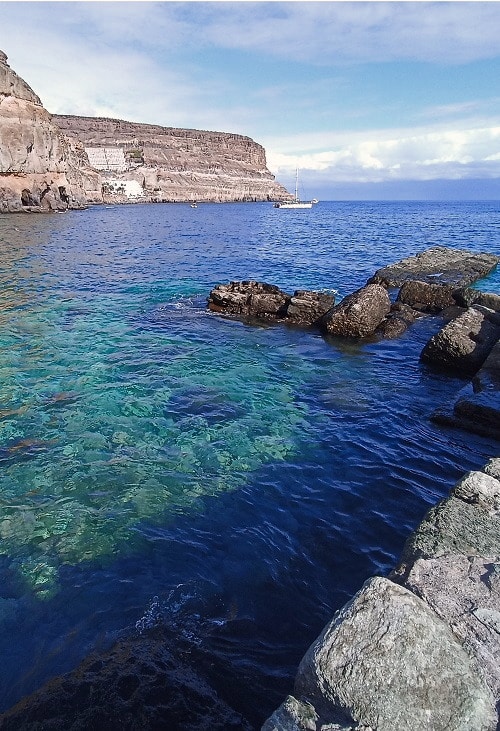
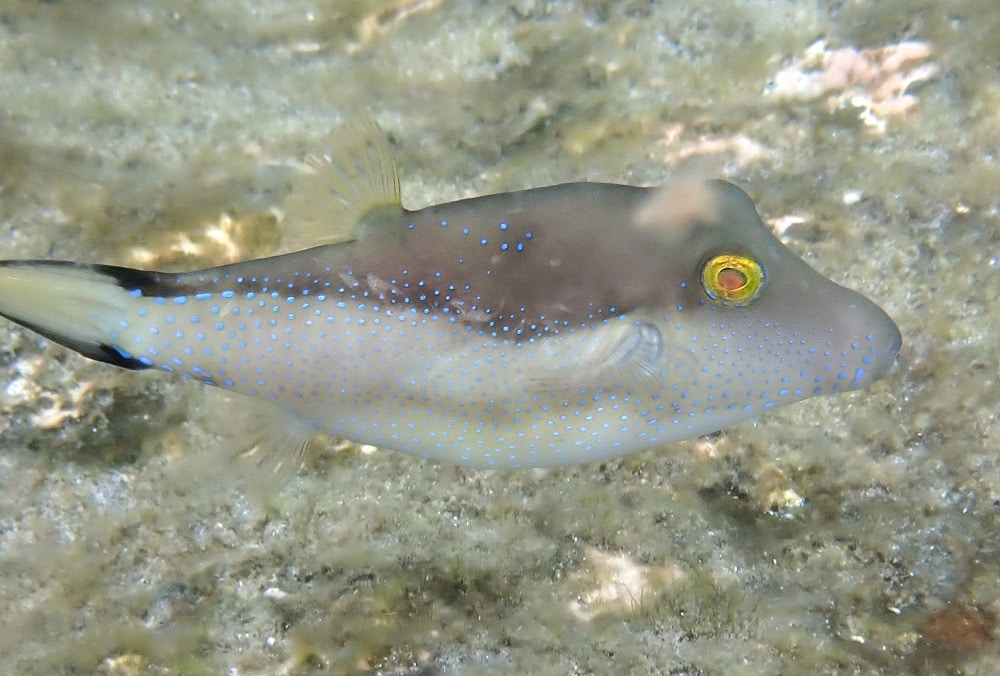
Sardina del Norte, Gáldar
Can you believe the dreamy colored houses, teeny tiny port and beautiful golden beach that make up Sardina del Norte?! This small coastal town is located on the north side of the island in the municipality of Gáldar. It’s a great place to spend a day lounging, taking in the views and – what else – taking a peek underwater. There’s plenty of sea life to be seen here.
There are a few different spots you can try here for snorkel. The sandy main beach is the most popular and offers the advantages of amenities, comfort, disabled accessibility and a lifeguard. Alternatively, you can choose to walk down to the end of the pier, which offers a little bit of protection if the waves are rough and has some handy stairs to easily get into the water.
Lastly, past the pier is a more private little cove called El Roquete, which makes for a third great place to snorkel here. Not bad for a single little town!
| Amenities? | Yes |
| Busy? | Medium |
| Easy to reach? | Yes |
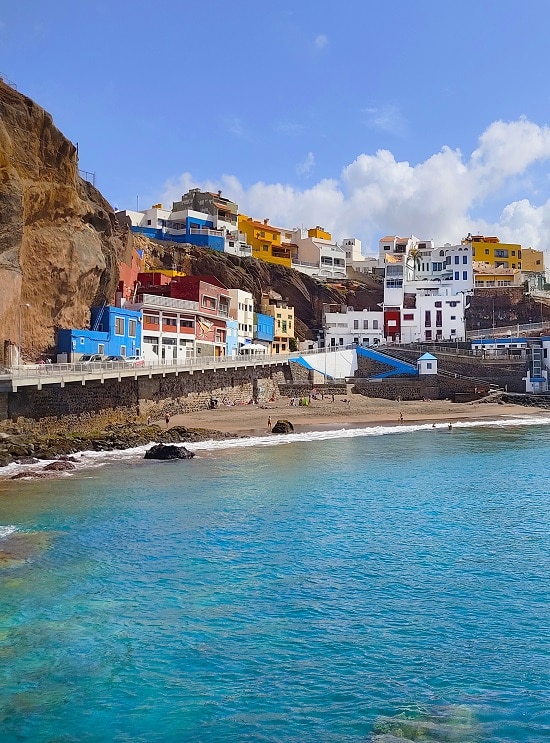
Risco Verde, Playa de Arinaga
Let’s head back to the eastern side of the island, to the town of Arinaga. If that sounds familiar, we just mentioned it at the top of this article in the section on Playa del Cabrón, which is just a stone’s throw away.
If you happen to be visiting there, don’t forget to also make your way into the town. The Playa de Arinaga area, with its seaside boardwalk and colored houses, is more than worth a visit! As an added bonus, you’ve also got some good options here to get some snorkel in.
My favorite spot to enter the underwater world here is at Risco Verde. This is a tiny, partly sheltered cove right at the start of the promenade (on the north end). It offers easy access into the water and a range of marine life. This is a popular location for divers, but there’s plenty to see with just a snorkel and goggles as well.
Once you’re done snorkeling, I recommend taking a peek at the rest of the rocky shore area. It’s filled with tide pools that house colorful Sally lightfoot crabs, sea urchins and even the occasional spotted sea hare grazing on algae.
| Amenities? | No |
| Busy? | Medium |
| Easy to reach? | Yes |
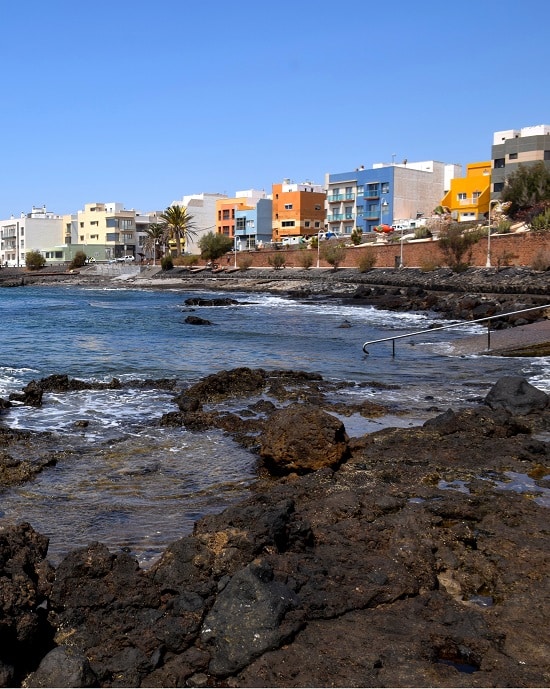
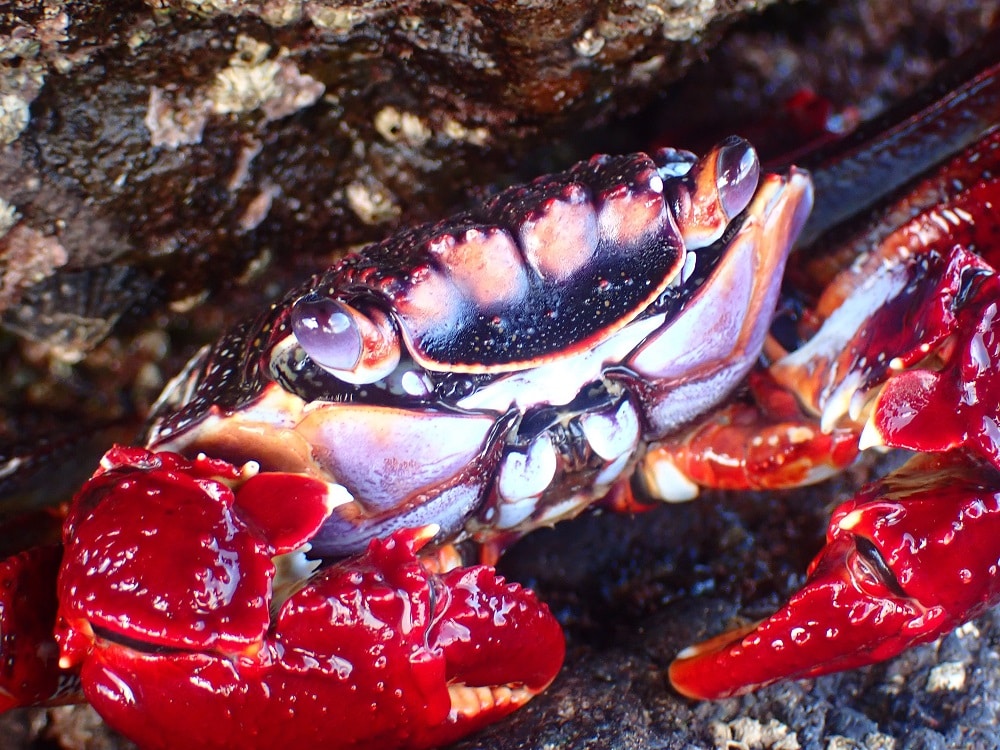
Great for beginners: Las Canteras, Las Palmas
Staying in the capital of Gran Canaria, Las Palmas? If you don’t want to go too far to do some underwater exploring, head to the city’s main beach of Las Canteras.
This sandy urban beach is very long and consists of multiple parts, but the best zone for snorkeling is in the middle. Here, you’ll be able to enjoy yourself even on days when the sea is rough: one of Las Canteras’ special features is the fact that the beach is protected by an exposed line of reef that runs parallel to the shore. This “barra”, or bar, breaks most of the larger waves and is what makes Las Canteras so safe and enjoyable.
I wasn’t personally overly impressed by the variety of sea life and underwater colors here, but I can’t deny that Las Canteras is great for beginners and very convenient. Clean and clear water despite being in the middle of the city, good amenities, easy to access and an almost perpetually calm sea make this a winner.
| Amenities? | Yes |
| Busy? | Yes |
| Easy to reach? | Yes |
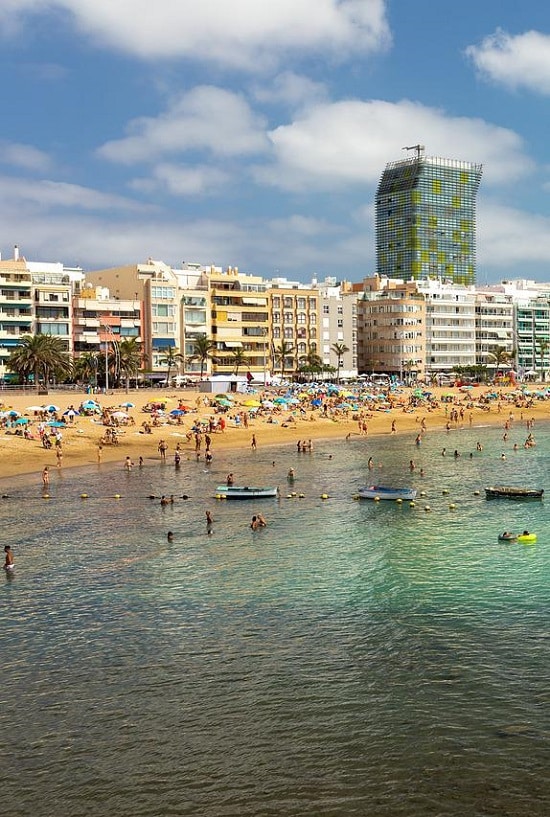
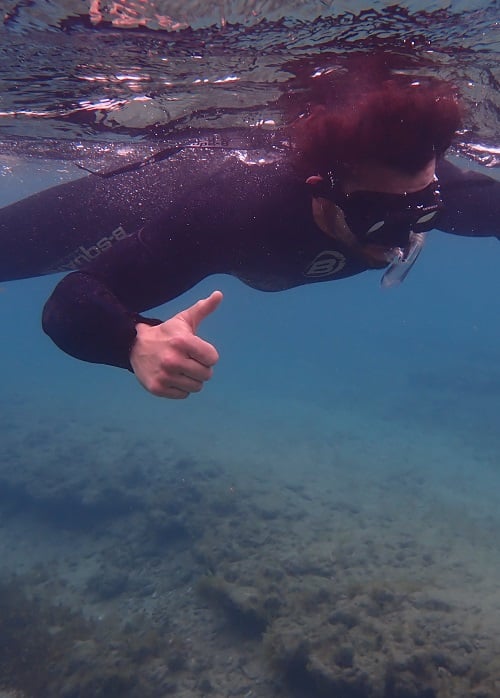
Playa de Amadores, Puerto Rico
Let’s head back south! Puerto Rico is a popular holiday resort located in Gran Canaria’s south. The town itself isn’t my favorite – I much prefer nearby Puerto de Mogán – but its main beach offers some pretty good snorkel opportunities. It’s called Playa de Amadores (Lovers’ Beach) and is a man-made cove with two rock wavebreakers that form an almost complete circle.
Playa de Amadores is heaven for beach enthusiasts: calm, blue and shallow waters, golden sand, easy to reach (plus wheelchair accessible) and plenty of amenities.
For snorkel, this sand pit doesn’t seem like the most logical choice, but the trick is to stick close to the wave breakers. If the surf allows it, you can even follow them along the outside. Plenty of sealife is attracted to the cover offered by the rocks.
| Amenities? | Yes |
| Busy? | Yes |
| Easy to reach? | Yes |
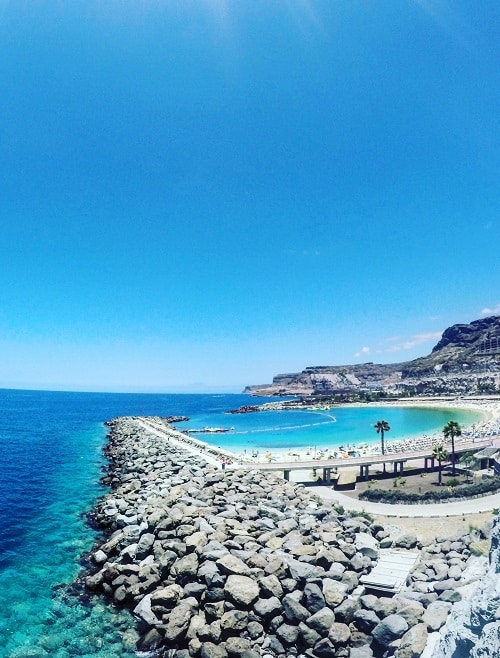
Tufia, Telde
Did you like Sardina del Norte, the charming beach-side village we discussed earlier? You’ll undoubtedly love Tufia as well. Located on the east side of the island close to the airport, this town is almost INSIDE the ocean, with waves splashing on the front steps of the white houses. It also features a few cave houses, which are definitely an interesting architectural sight to see.
Tufia’s small black sandy beach makes for a great entry spot to get some snorkel in. There’s lots to see here, including octopus, angel sharks, seahorses and much more. Heck, you might even spot divers in their natural habitat, since this is one of the more popular dive sites on Gran Canaria! Just remember to bring snacks and water, because there isn’t much here in terms of amenities.
If you’ve explored Tufia beach and would like to catch some more sun, it isn’t too much of a trip to Playa de Aguadulce on the other side of the hill.
| Amenities? | No |
| Busy? | No, but very small so gets packed |
| Easy to reach? | Steep access road |
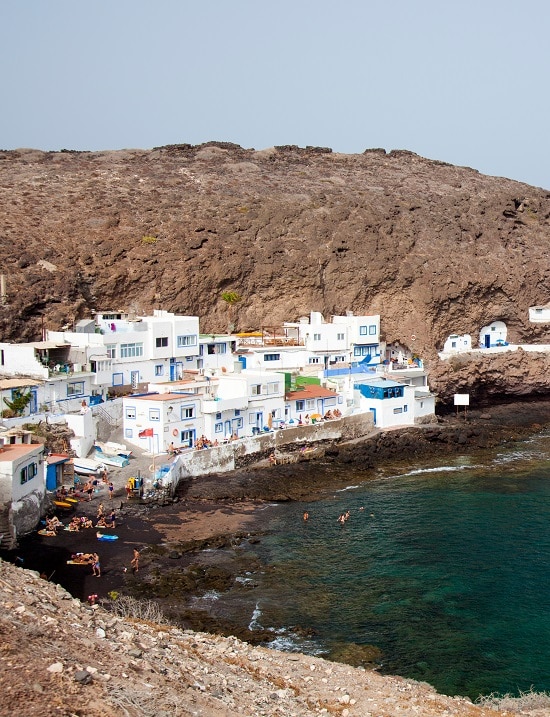
Where to stay in Gran Canaria?
As you’ve probably concluded by now, Gran Canaria boasts a variety of beautiful villages, towns and cities. There truly is something for everyone on this island! I personally stay in Las Palmas when I’m there, since it’s a great starting point for full-island exploration.
You can also consider:
- Maspalomas: The most popular tourist destination on the island, close to Gran Canaria’s famous sand dunes. It has discos and restaurants, plus plenty of family-friendly activities.
- Puerto Rico: Beach-side and suitable for families, with beautiful volcanic mountain surroundings.
- Puerto de Mogán: Although tourists have definitely discovered it, this fishing village manages to retain its charm.
- Agaete: For good access to the rugged north and west sides of the island.
- Cruz de Tejada: A stunning inland destination for those who also love to hike.
Find your ideal place to stay with Booking:
If you have any more questions about the best places to snorkel Gran Canaria, don’t hesitate to leave a comment below! If you ended up visiting any of the beaches on the list, I’d love to know what you thought.

